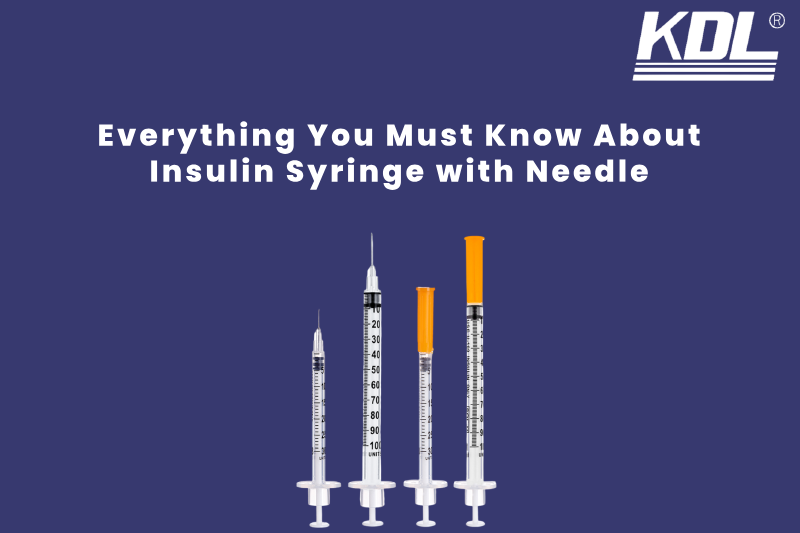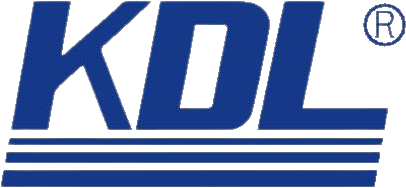
If you or someone you care about has diabetes, you undoubtedly already know how vital insulin is. For a lot of individuals, giving themselves insulin shots is a part of their daily lives. using the right insulin syringe with needle makes a great impact. It changes how pleasant the injection is, how precise the amount is, and even how well your blood sugar remains under control.
This guide will guide you all you need to know about insulin syringe with needle, including the many kinds, components, and sizes, as well as how to pick and use them appropriately.
What Is an Insulin Syringe with Needle?
An insulin syringe with a needle is an essential medical device designed specifically for the precise injection of insulin beneath the skin. This product is expertly crafted for single use, ensuring that you receive precise doses of insulin with the utmost safety.
Insulin syringes stand out because they are uniquely marked in insulin units, ensuring precise dosing rather than using milliliters (mL) like regular syringes. This helps make sure you get exactly the dose your doctor prescribes.
Insulin syringes consist of three essential components:
- Barrel: the essential clear tube designed to securely hold the insulin.
- Plunger: the essential component that you push to deliver the insulin effectively.
- Needle: a slender metal tip designed to penetrate the skin with precision.
Why Use an Insulin Syringe?
While some individuals opt for insulin pens or pumps, a significant number continue to depend on insulin syringes with needles for several compelling reasons:
- These options offer a more budget-friendly alternative to insulin pens.
- They provide exceptional control over the dosage.
- These can be utilized with any type of insulin vial.
- They are readily accessible and can be disposed of safely with ease.
Syringes are undoubtedly the superior choice for individuals who require mixed insulin types or custom doses.
Parts of an Insulin Syringe
Let’s break down each part of an insulin syringe with needle and what it does.
Barrel
The clear tube that holds the insulin is called the “barrel.” Units are often used to mark it, like 30, 50, or 100 units. With these marks, you can get the right amount.
Plunger
Inside the tube, the plunger goes up and down. It draws insulin into the syringe when you pull it back. It gives you an insulin shot when you push it forward.
Needle
It’s a thin, short needle. It’s connected to the end of the needle and has a cap on top of it to keep it safe before use. Nodes come in various sizes (lengths and thicknesses).
Types of Insulin Syringes
There are different types of insulin syringes, and each is designed for a certain insulin strength and dose range.
1. U-100 Insulin Syringes
A U-100 insulin has 100 units of insulin in 1 mL of liquids, which is what most people use. Most people use these needles, which come in amounts of 1 mL, 0.5 mL, and 0.3 mL.
2. U-40 Insulin Syringes
These are used for U-40 insulin, which has 40 units per 1 mL and is less concentrated. In some countries, they’re more popular, and vets use them for cats with diabetes.
3. Prefilled Insulin Syringes
Some people prepare needles that are already full so that they are easier to use, especially when they are moving or need help from a helper.
Insulin Syringe Sizes and Their Uses
Choosing the right insulin syringe size depends on how many units of insulin you inject at a time.
| Syringe Size | Capacity (Units) | Best For |
|---|---|---|
| 0.3 mL | Up to 30 units | Small doses |
| 0.5 mL | Up to 50 units | Medium doses |
| 1.0 mL | Up to 100 units | Large doses |
Smaller syringes make it easier to read markings and measure smaller doses accurately. If you use less than 30 units per dose, a 0.3 mL syringe may be ideal.
Understand Needle Length and Gauge in Insulin Syringe with Needle
The tip is just as important as the base on an insulin pump. Length and size are what make it feel and work the way they do.
Length of the Needle
When it comes to length, insulin needles usually come in:
- 4 mm (not long)
- 6-mm
- 8 mm
- 12.7 mm
These days, shorter needles (4 or 6 mm) are typically better. They can put insulin just under the skin, not into the muscle. This makes the insulin work better and lessens pain.
Needle Size
How thick the needle is is what the size means. The needle is smaller as the number goes up.
Some common insulin needle sizes are:
- 28G (bigger)
- 30G
- 31G (less thick)
Thinner needles are easier to use every day and hurt less, so most people like them.
How to Choose the Right Insulin Syringe with Needle
There are a few things that affect which needle you choose:
The type of insulin you have (U-100 or U-40)
Always use a syringe that is the right amount for your insulin.
Your amount of insulin
Accuracy is better when smaller syringes are use for smaller amounts.
Your body type
Needles need to be shorter for people who are thinner.
Reading ease
Pick a syringe that has big, clear characters on it.
Talk to your doctor or pharmacist if you’re not sure. You might give yourself the wrong amount if you use the wrong type or size of needle. This can make it harder to control your blood sugar.
How to Make Insulin Injections Less Painful and Easier
It doesn’t have to hurt to inject insulin. They are easy to improve by following these steps:
- Take a moment to let the insulin warm up before you inject it.
- Take a deep breath and relax before the shot.
- Every time, use a new needle because old ones hurt more.
- Do not put an injection into a mole, scar, or bruise.
- Needle lengths that are 4 mm or 6 mm might help if shots hurt.
Talk to your doctor or nurse if you feel pain or bruises all the time. They can look at how you’re doing and suggest better syringes.
Can an insulin needle or syringe be used more than once?
Most healthcare professionals strongly advise against reusing insulin syringes or needles. Here’s why:
- After one use, the needle gets dull, which makes the next shot hurt more.
- By reusing, you raise the chance of getting an infection or skin injury.
- The needle could bend or break, which would hurt you.
Always use a new, sterile insulin syringe with needle each time you inject. Safe disposal is just as important as safe use.
Choosing Between Syringe, Pen, and Pump
There are several ways to inject insulin — using a syringe, an insulin pen, or an insulin pump. Each has its own pros and cons.
| Method | Pros | Cons |
|---|---|---|
| Syringe with needle | Affordable, flexible, works with any insulin vial | Must draw dose manually |
| Insulin pen | Convenient, easy to use, less visible | More expensive |
| Insulin pump | Automatic insulin delivery | Complex and costly |
Many people start with insulin syringes because they’re reliable and simple to use. Some later switch to pens or pumps for convenience.
Buying Insulin Syringe with Needle: What to Look For
When buying insulin syringes (in-store or online), pay attention to:
- Unit markings (match with your insulin)
- Syringe volume (0.3, 0.5, or 1 mL)
- Needle gauge and length
- Sterile, single-use packaging
- Trusted brand or pharmacy
Always make sure the product is seal, sterile, and approve by health authorities (like FDA or CE-certified).
Final Thoughts
Choosing the right insulin syringe with a needle is super important for making sure your insulin injections are safe, comfortable, and accurate. If you’ve just been diagnosed or are supporting someone with diabetes, getting a grip on syringe sizes, needle gauges, and the right injection techniques can really help out.
Always
- Use a new syringe and needle each time.
- Match your syringe to your insulin type.
- Inject in clean, rotated sites.
- Dispose of syringes safely.
Dealing with diabetes might seem a bit daunting, but with the right info and resources, you can confidently take charge — one injection at a time.
 +86-791-8686-1216
+86-791-8686-1216 

